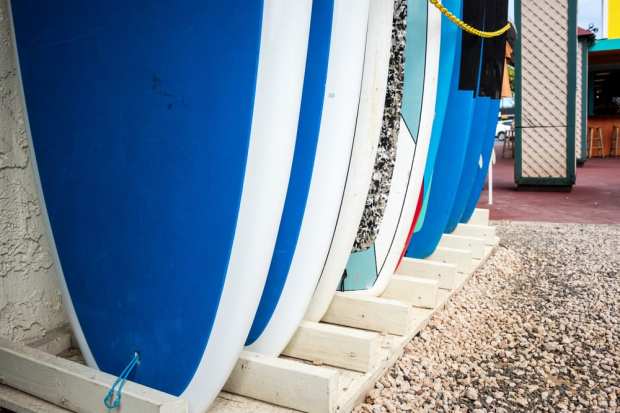How Digital Tech Helps Travelers Crush Big Waves

Thanks to eCommerce and digital payments, the global travel industry is undergoing significant disruption. At the same time, more consumers are living as so-called digital nomads — or otherwise finding new ways to see and experience the world.
The intersection of those two trends provides a business opportunity, as discussed in a recent PYMNTS interview with Gideon Silverman, CEO at Awayco, a company that enables the rental of such gear as surfboards, snowboards and bikes at retail and affiliate locations around the world.
Until recently, this market “was pretty unsophisticated in terms of payments,” Silverman told PYMNTS. Now, though, the goal is to “transform the rental experience, and make it premium and desirable.”
Rise Of Rentals
Indeed, that taps into another, larger commerce trend: the rise of the sharing, or rental, economy, with its growth being fueled not only by demands and expectations from younger consumers, but digital marketplaces, localized payment options and other such tools.
PYMNTS research has regularly documented all that, and one of the newest reports from that area of payments and commerce found that the rental scooter market is quickly expanding, but it’s experiencing growing pains, too. Today’s consumers are mobile-savvy, and they’re quick to drop services that saddle them with clunky experiences. This reality has made rental scooter provider Lime focus on offering smooth services, and has been central to its product strategy as it built its mobile platform.
Those are all lessons that apply to the world in which Awayco operates, where consumers are “mobile-first,” Silverman said. Those consumers — given their travel habits, and relatively high sense of adventure — are looking for seamless experiences that go beyond the price tag. Some want to book gear rentals close to the day or days they will need them, while others tend to plan over the longer term. Awayco’s pricing structure, which is generally within the subscription commerce model, can accommodate those different consumer desires.
“It’s not payment by installment so much as it is payment by use,” Silverman said. “What we are trying to build is an alternative to ownership.”
Travel Partnerships
The company partners with manufacturers, stores, coffee shops, hostels and resorts to offer gear rentals to consumers via the Awayco platform. Prices vary depending on availability (that is, seasonality) and location, though consumers who book for longer will get lower day rates, he said. Gear is returned to the same partner location when done, and those consumers who opt to pay $95 per year for what Awayco calls its “Perks” membership option not only get a 10 percent discount on rentals, but a 20 percent discount on any damage charges, not including lost or stolen gear.
As might be imagined, business is more brisk during the summer months, and includes a good amount of tourists — all of whom could potentially bring in new business to those locations that offer the rental gear (consumers buying coffee, for instance, or other goods while retrieving or returning their rentals). During the winter months, the consumer base is more localized based on the affiliate location, but that doesn’t mean business is dead — winter sports, after all, are massively popular as well. Gear comes in all levels, suited for everyone from beginners to experts, Silverman told PYMNTS.
Indeed, as PYMNTS has covered, the travel activities industry is the fastest growing segment in the tourism market, and digital technology is enabling that growth. A bevy of startups is targeting millennials around the world, offering services such as amusement park tickets, cooking classes, walking tours and more, focusing mainly on the growing Asian travel market. (Awayco serves that market as well, including Japan and Indonesia.)
At the same time, the travel industry is embracing — and sometimes struggling with — payments innovation, offering more local payment options, among other tasks. Expect all these trends to keep intersecting in various ways as more consumers take to life on the road.